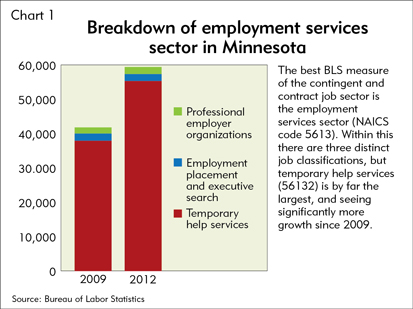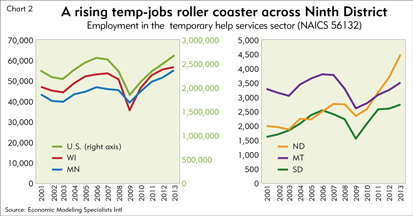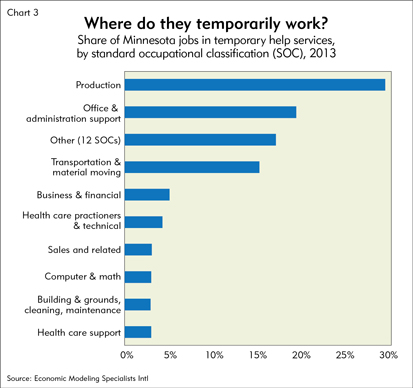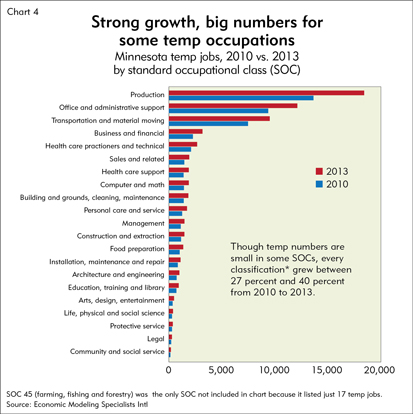The most comprehensive and updated government data on contingent jobs come from the employment services sector (NAICS code 5613), tracked by the Bureau of Labor Statistics (BLS). Within this code, there are three distinct job classifications: professional employer organizations (56131), temporary help services (56132) and employment placement and executive search (56133). Of the three, temporary help services is by far the largest and has seen the strongest growth since 2009, as the Minnesota example illustrates (see Chart 1).
The size and growth of temporary help services varies across Ninth District states. As a percentage of total employment, it is lowest in Montana and South Dakota, highest in Minnesota and Wisconsin, and growing quickly in North Dakota, according to data provided to the fedgazette by Economic Modeling Specialists Intl. EMSI estimates use a composite employment data set of more than 90 sources, including an enhanced, unsuppressed version of quarterly BLS surveys.
But all district states have seen the same general pattern of significant job loss preceding and during recessions, followed by strong growth coming out of recessions (see Chart 2). In 2013, temp jobs in district states rose above prerecession levels, with the exception of Montana. The Dakotas have seen the biggest gains in percentage terms, not only since the end of the recession, but over the past dozen years. In fact, since 2009, North Dakota and South Dakota have seen the biggest increase in temporary help workers in the country, with both states doubling their headcount in this sector.
Temp workers now permeate virtually all industry sectors, though some much more than others. Production jobs in manufacturing are still the most common, followed by office administration. But other industries like health care, finance and information technology are gaining a greater foothold, and growth is widespread among standard occupational classes (see Charts 3 and 4).
Related article: Matchmaker, matchmaker
The staffing services industry has seen remarkable growth since the end of the recession. What does that mean for employers and workers going forward?
Ron Wirtz is a Minneapolis Fed regional outreach director. Ron tracks current business conditions, with a focus on employment and wages, construction, real estate, consumer spending, and tourism. In this role, he networks with businesses in the Bank’s six-state region and gives frequent speeches on economic conditions. Follow him on Twitter @RonWirtz.









